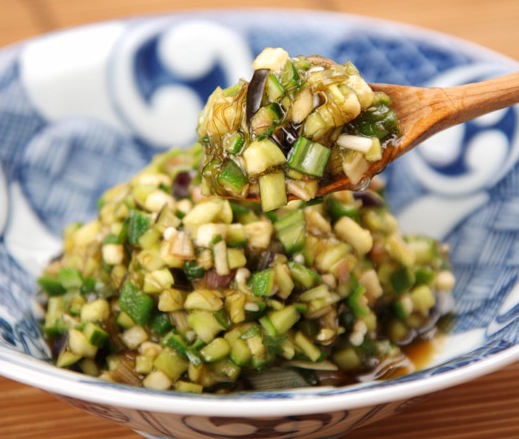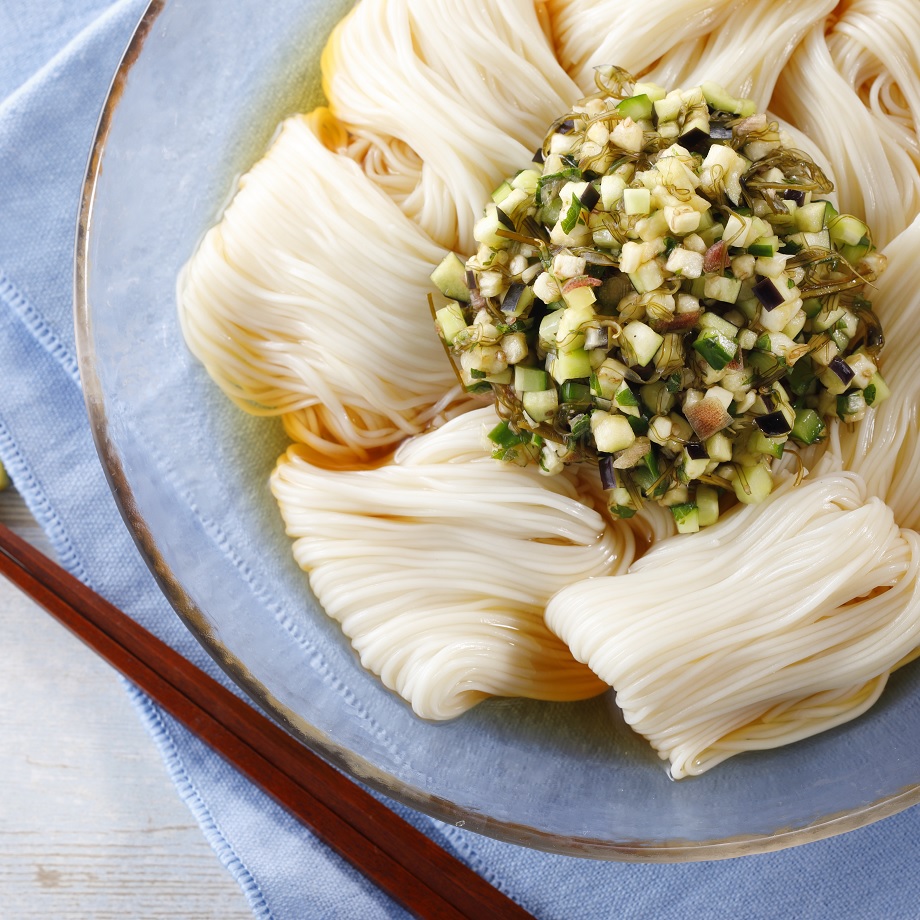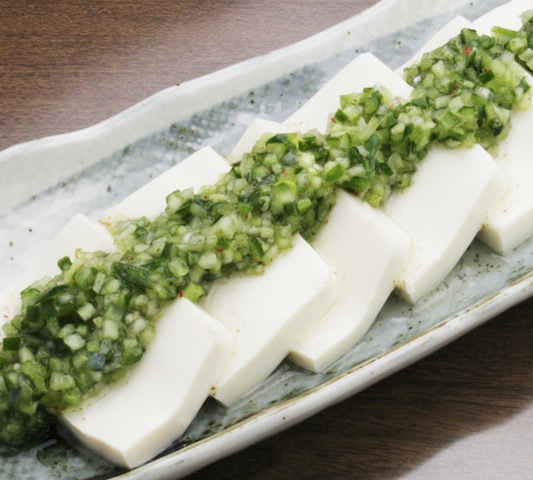
Chopped eggplant, cucumbers, okra and herbs such as shiso and myōga make salsa-like Dashi
山形だし Yamagata Dashi
Somewhere between a salsa and chutney, Yamagata’s summertime signature dish Dashi is a refreshing mixture of chopped vegetables and herbs. It often tops cubes or slabs of silken tōfu to make a dish called Dashi Yakko, truly restorative on days when temperatures and humidity soar.
The Japanese generally embrace foods with viscosity (think positive cling, not negative slime) and in this dish, vegetables such as okra and a slippery yam called nagaimo encourage other minced morsels to bind with each other. The result is a mixture of crisp, succulent tidbits with a slightly slick mouth feel.

Yamagata Dashi tops swirls of chilled sōmen noodles.

Yamagata Dashi tops slabs of chilled silken tōfu
Hoping you will use this classic rendition of Dashi as a point of departure from which to create your own personal version, I suggest several possibilities to start you off. Yamagata Dashi will keep, refrigerated, for up to 5 days. Having a jar on hand will make it easy to pull together a main course salad for supper on a muggy summer evening. In Japan, the veggie-herb mixture also garnishes cold noodles, or plain cooked rice. Other (eclectic) uses for Dashi include wrapping in lettuce leaves (with, or without, the addition of shredded poached chicken), stuffing tomatoes or bell pepper cups with it or adding it to a pita-pocket sandwich.
DOWNLOAD recipe for Yamagata DASHI




